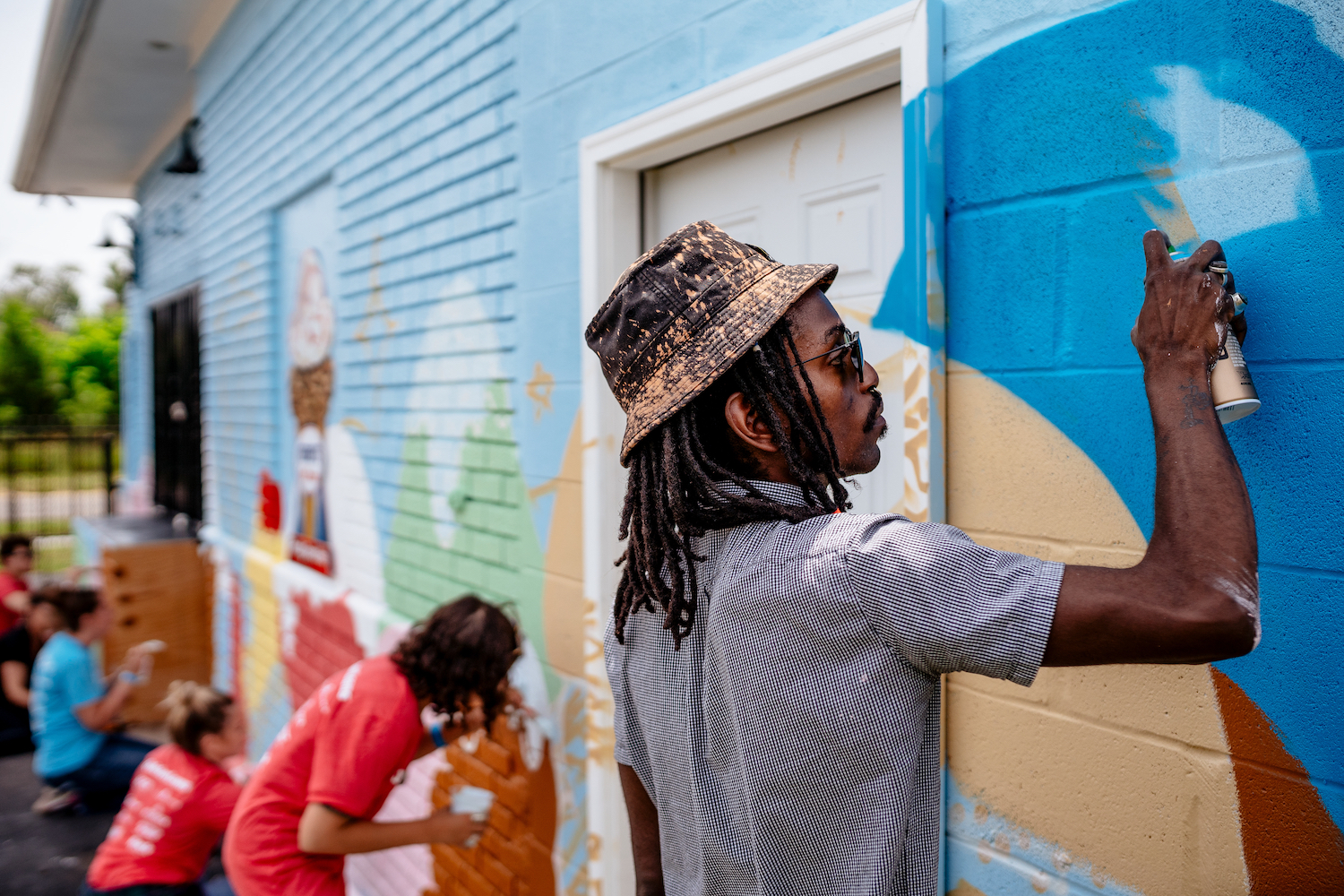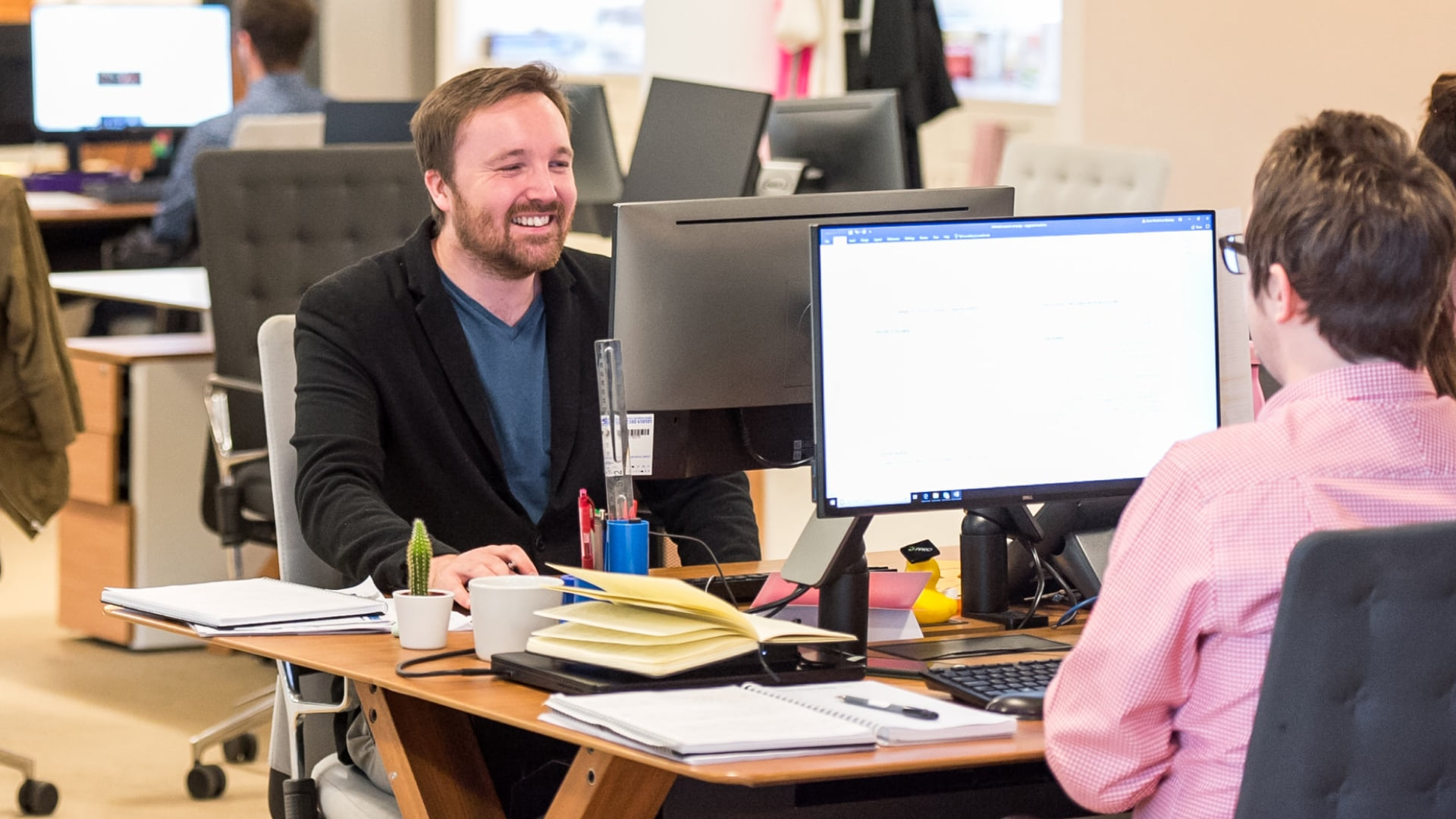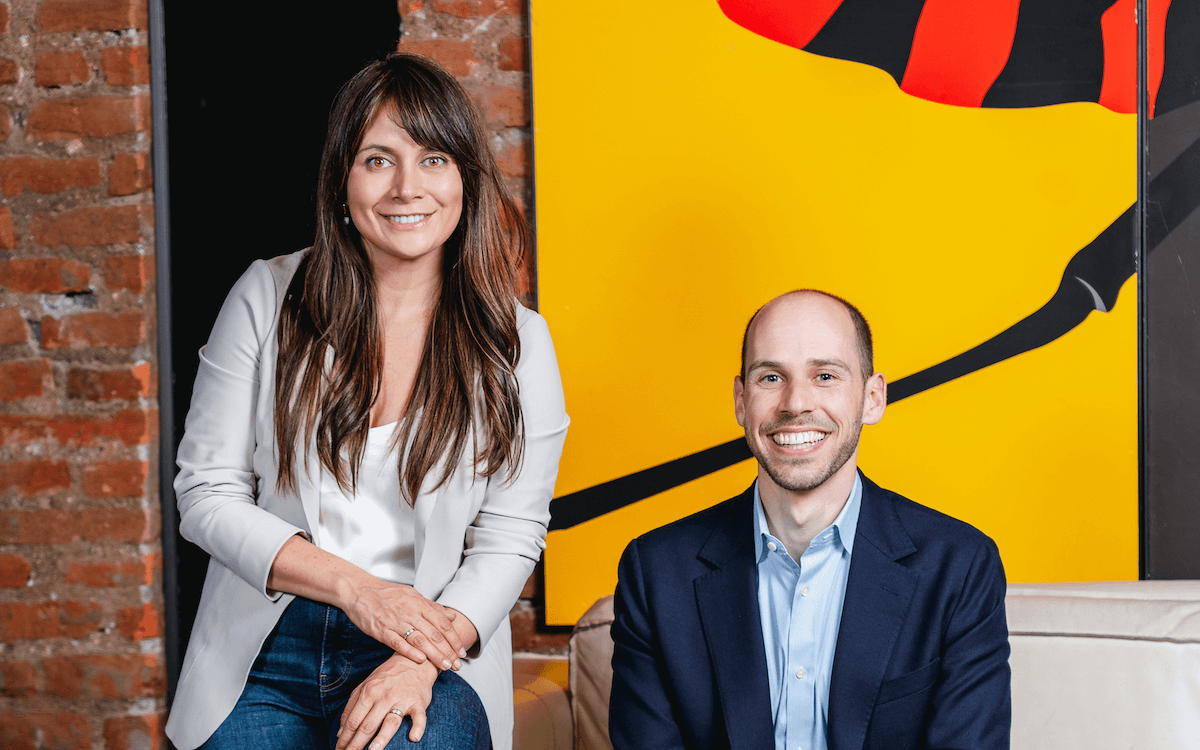ImpactAlpha, February 14 – Entrepreneurial hubs around the country are rethinking how they attract and support a group of business founders they’ve historically overlooked and underserved: entrepreneurs of color. In others, Black and Latino entrepreneurs are building business support structures from the ground up.
Living Cities is finding and investing in what works. We identify promising practices to scale ways to reduce racial disparities in income and wealth. Living Cities’ Blended Catalyst Fund is a $37 million structured debt fund that has helped the organization learn about what it takes to invest in environments that provide entrepreneurs of color with opportunities to thrive.
Our approach to investing and, most importantly, our current role in building ecosystems for entrepreneurs of color have been shaped by past impact investments in small business lenders in Baltimore, New Orleans and Minneapolis, St. Paul and Oregon State; social enterprise venture capital and loan funds based in the entrepreneurial hubs of San Francisco and New York; and experience with the Integration Initiative, our collective impact approach to community economic development across 11 US cities.
Building ecosystems
Here are some early lessons we’ve learned.
Work proceeds at the pace of trust. In New Orleans, we learned that trust is an essential asset. While we activated relationships built through our previous work in New Orleans, we needed to take a step back and acknowledge any past harm done by not naming race since the beginning of our relationship, to build up more trust and go from working relationships to making firm, multi-year impact investment commitments. After some honest and difficult conversations, we co-created a $1.3 million fund with the city of New Orleans to provide Disadvantaged Business Enterprises with financial security to successfully deliver on contracts and eventually become prime city contractors.
Reliable relationships aid systems change work. In the Minneapolis-Saint Paul region we learned that supporting local stakeholders leads to robust entrepreneurial ecosystems. By leveraging relationships in the Twin Cities, we made a $2.2 million investment in the Neighborhood Development Center, a local capital and technical assistance provider focusing on small businesses that are mostly owned by people of color. That investment helped maintain the operation of dozens of minority-owned small businesses in the Green Line corridor, create and preserve affordable housing, as well as embed an “equity lens” through the region’s planning systems.
Unlocking procurement dollars leads to long-term economic benefit. In Baltimore we learned that we must partner, not work around, the public sector and community anchors. We made two impact investments in 2011 and 2017 to finance the development of affordable housing, charter schools and other community facilities. These projects are driven by local universities and the City of Baltimore and are working to ensure low-income communities benefit from large-scale development projects and the economic opportunities generated by these large public and anchor institutions.
Inclusive ecosystems
As part of our Start Up, Stay Up, Scale Up, or (SU)3 [pronounced sue cubed] initiative, we are testing what it takes to create an enabling environment where entrepreneurs of color who are scaling, or poised to scale, their businesses can thrive and grow. The goal is for cities like Albuquerque, New Orleans, and San Francisco to continue to build their local ecosystems so they can identify and support more founders of color like Cultivating Coders’s Charles Ashley, Chanel Melton of hair extension sales platform Rose Gold and KJ Miller and Amanda Johnson, co-founders of Mented Cosmetics, a vegan, non-toxic premium beauty line.
Entrepreneurs of color need help breaking down barriers to capital, but also expanding into primarily White entrepreneurial networks. What does that mean for ecosystem builders? Some may begin by auditing their landscape to ensure that tailored technical assistance and mentors from their industry sector exist and have the capacity to meet the needs of founders attempting to scale their businesses. Others might need to look at how the physical assets create equity by planning for the needs of entrepreneurs and making the market navigable for those who want not just affordable, but also appreciating, commercial and residential real estate.
(SU)3 works with local stakeholders who are intentionally creating a more seamless system of support centered on high-growth entrepreneurs of color.
City influence
Within our initiative, cities are recognizing how their ecosystems need to evolve to meet the needs of high growth entrepreneurs of color.
Making entrepreneurs of color more visible – to one another and to potential investors by creating spaces and events for where they can easily “collide” is a priority for ecosystem builders in Albuquerque who hosted an Entrepreneurial Ecosystem Expo last year.
The City of New Orleans looked at their role in supporting businesses owned by people of color by analyzing where they are spending their city dollars. When they conducted a Disparity Study, it revealed that the city’s intentional improvement of policies and programs had in fact increased purchasing from firms owned by people of color and women, achieving 47% utilization of existing firms. However, the study also revealed less than 2% of existing businesses owned by people of color and women were getting contracts from the private sector. Making the data public might not lead directly to increased angel or other investments initially but it has prompted the private sector to form a council and look at how they might spend more of their dollars on firms owned by people of color.
Thanks to the 2016 SEC rules, accredited investors are not the only ones who have the potential to make outsized returns. San Francisco is looking to expand awareness about crowdfunding platforms as a way for people of color who are looking to fund companies, but haven’t traditionally invested in high-growth entrepreneurs, support diverse owners.
As a community of practice, cities are exchanging ideas on how to fill gaps in technical assistance or capital needs. Despite the differences in their markets, they are finding commonalities in their experience as ecosystem builders and those of their entrepreneurs. Throughout this year, we will highlight stories of impact to inspire broader adoption of best practices developed from (SU)3 work to expand the tools ecosystem builders use to break down barriers for entrepreneurs in their communities.
Open questions
Our work moving forward aims to identify promising practices that could be tested and adopted by ecosystem builders everywhere who realize that it is an economic imperative to increase the number of founders of color and the number of people who invest in we want our local and national economy to be competitive and innovative.
Across our portfolio of initiatives focused on increasing births and growth of businesses owned by people of color, we are asking these questions to determine where Living Cities can catalyze systems-changing efforts:
- Are there enough capital providers and enough of a balance of capital provided (debt, working capital, equity) for the needs of entrepreneurs of color?
- How are high-growth, industry-specific, local and national networks intentionally including people of color business owners or providing mentorship for them?
- How does local government best influence an ecosystem to become centered around people of color?
- What are the existing networks of Black and Latino people who are working to fill gaps in accessing, leveraging and deploying capital for people of color?
- Who are the fund managers who are focusing on capital for people of color?
If you are an entrepreneur or investor interested connecting with our ecosystem-building colleagues in our (SU)³ geographic areas, please reach out to Elizabeth Reynoso at ereynoso@livingcities.org or Santiago Carrillo at scarrillo@livingcities.org
Elizabeth Reynoso is associate director of public sector innovation at Living Cities. Santiago Carrillo is a senior associate for the economic opportunity roadmap at Living Cities. Brian Nagendra an assistant director of the catalyst funds.












